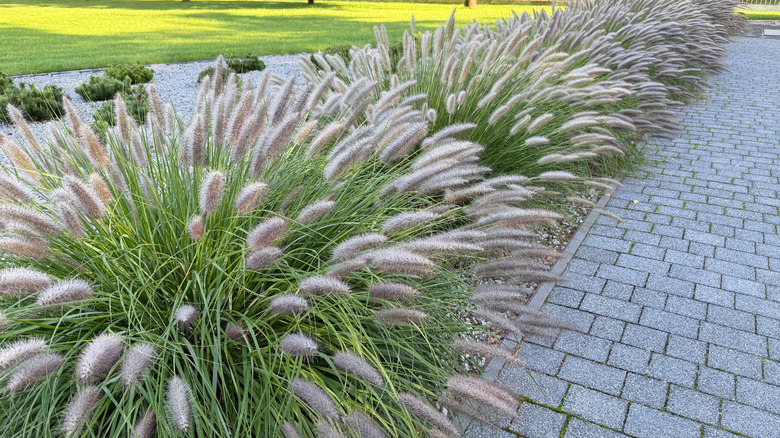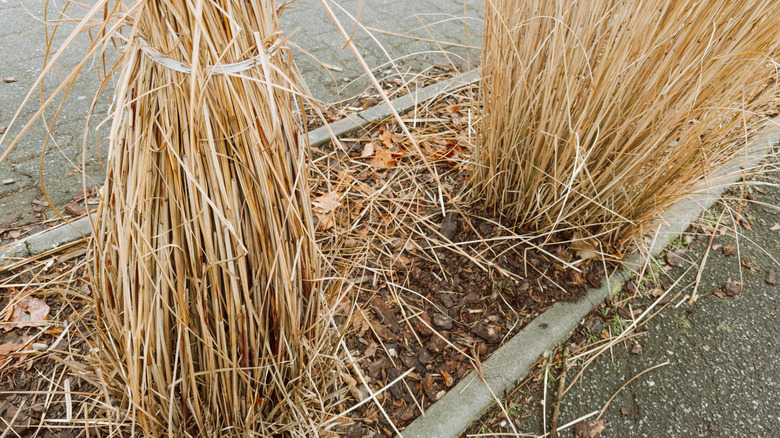How A Simple Line Of String Can Help You Cut Back Ornamental Grasses
When it's time to trim your colorful ornamental grasses in the fall or early spring, getting a straight and even cut can be a challenge. If you just eyeball the line, you risk a choppy, uneven top. The best way to get a clean cut is to use a piece of string to create a guide. By wrapping the dead foliage tightly with twine or a bungee cord, you compress the large clump into a single, smooth column. This bundled shape lets you make one level cut all the way around, making sure each plant is level and uniform.
The proper timing for cutting depends on the grass type. Warm-season grasses (which grow in the summer) are best cut back in the fall, while cool-season grasses (which grow in the spring and fall) should be trimmed in early spring before new growth starts. Don't cut them back in the summer or winter, since this can damage the plant and impede growth.
Choose a cutting tool based on the clump's size and stem thickness. Pruning shears are best for small clumps, or use hedge trimmers/loppers for larger, mature plants. Always wear a long-sleeved shirt and thick gloves, since the edges of some grass blades can be sharp. With the string marking the correct height, hold the bundled grass to keep it steady. Make a single, smooth cut around the plant, aiming to cut just an inch or two below the string. This technique results in a neat base that allows new foliage to grow evenly. When trimming, cut the plants to a height of about 3 to 6 inches from the ground, and as a general rule, don't remove more than one-third of any living growth.
The benefits of cutting back ornamental grasses
Trimming ornamental grasses is about more than keeping the plants neat or making cleanup considerably easier. It's an important part of plant care that promotes growth. The main benefit of cutting back ornamental grass is that it allows sunlight and air to reach the crown of the plant, where new growth begins. If the old material is left in place, it can suppress the green shoots that grow in the spring, potentially leading to slow or uneven growth.
By removing old growth, you also clear out material that can house pests or become mildewy. This is why it's important to know which ornamental grasses you should be cutting back in the fall. For cool-season varieties that keep some color through winter, removing the spent foliage is needed to prevent a buildup of brown leaf tips mixed in with the new green growth. For many clumping varieties of ornamental grasses, annual trimming helps maintain a compact shape and prevents the plant from flopping over as it gets taller.

